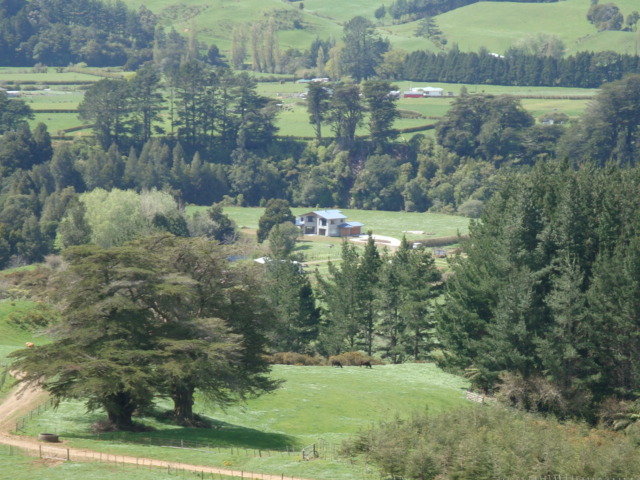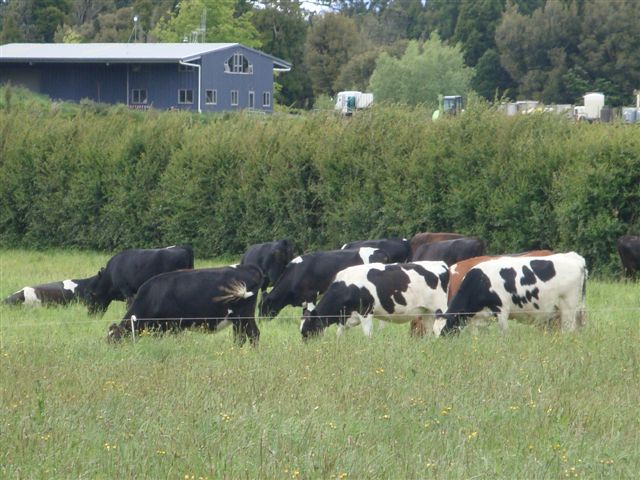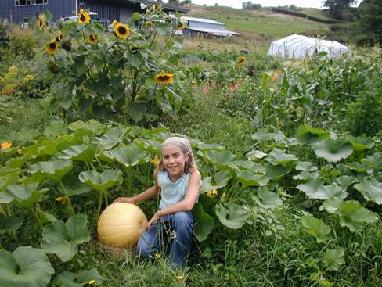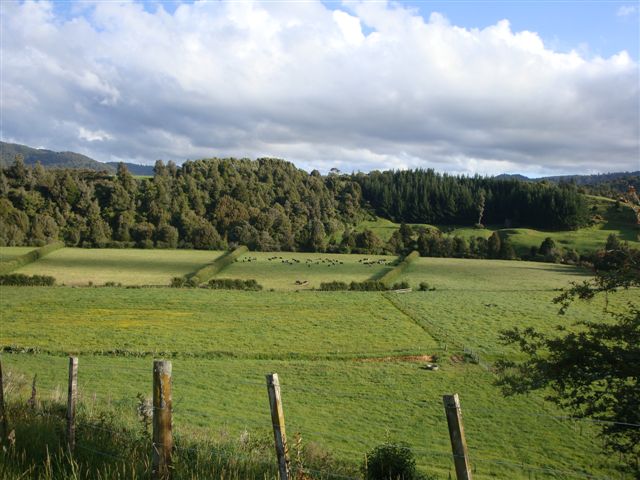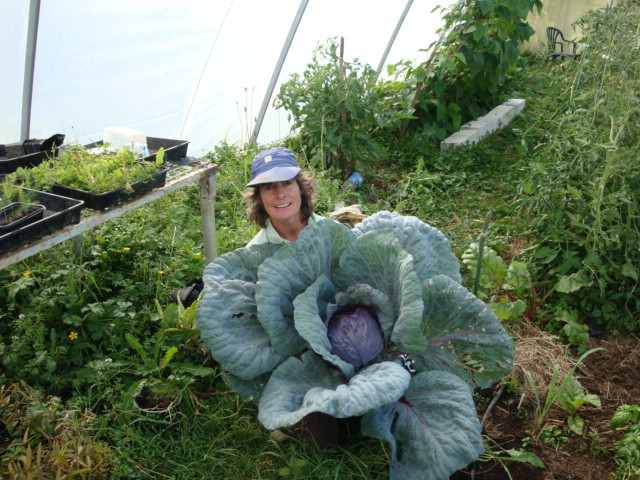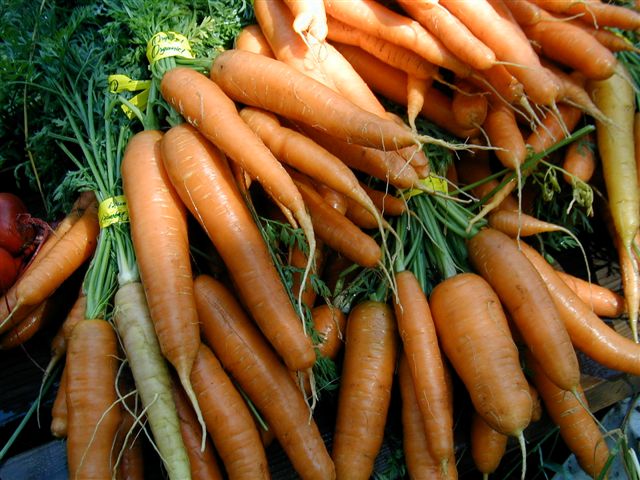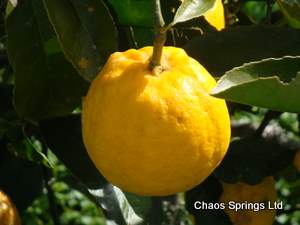Our Farm
Chaos Springs is a 200 acre mixed cropping farm raising pasture, animals, fruit, and vegetables in the Waitawheta Valley near Waihi.
We make compost and soil management tools to help growers take control of their soil fertility. To manage soils well we need to understand all four realms of soil function: soil biology, minerals, energetics and the plant—soil relationship.
We believe most soil fertility issues can eventually be handled within the farm boundary. Browse our website or contact us for information and tools to help you achieve this end.
Organically Grown Fruit and Vegetables
Chaos Springs grows a selection of fresh organically grown fruit and vegetables. After 20 years as commercial lettuce and specialty vegetable growers in Utah, Jenny still has not lost her passion for growing and is obsessed with her garden.
In the orchard, our main crop is Meyer lemons which are available from mid-May until December. We also have small quantities of grapefruit, mandarins, uglis, oranges, peaches, apples, pears, plums, apricots and cherries.
As of January 2017, our certified organic fruit, vegetables and herbs are available to buy at RAW Artisan Market Place, in Haszard Street, Waihi. You can check out their Facebook page here for more information.
Fruit & Vege Seeds
Seeds are what it is all about. For the last 27 years we have lived with bags of seeds in every cupboard, drawer and corner of every place we have lived. Jenny is endowed with seed saving in her genes. As a ninth generation seed merchant she cannot help herself. As multi-national companies continue to genetically modify and patent seed varieties, saving heirloom and open pollinated seeds is essential for small growers and home gardens to survive.
Team Chaos
From left to right, here's the team: Jenny Yates - Grower, Steve Erickson - Trouble Maker, Blue Hobbs - Everything Else, Sequoia Erickson - Chief Critic
Why Chaos Springs?
There are quite a few stories behind the name - here are a few.
Steiner talks about the duality of Chaos and Order and how, in the stirring of the Preparations 500 and 501, the real goal is the "energising" of the mixtures by the alternating of creating order by stirring the liquid in one direction, and then creating chaos by the reversing of that stirring. The repeated creation of chaos and order is what pulls the energies into the mixture.
In Physics Chaos Theory, also known as the butterfly effect, it has been mathematically proven that the tiniest change in initial conditions can have dramatic affects on the final outcome. Thus the flapping of a butterfly's wings in the tropics can affect where a hurricane might go in North America.
We were looking for a name that represented both of these ideas and that would stand out as we developed our farm products. We made a very long list and this was the survivor. Also the farm has many springs that seem to appear out of nowhere when it rains. The truth however is found in my workshop.
What is Chaos Theory?
Chaos is the science of surprises, of the non-linear and the unpredictable. It teaches us to expect the unexpected. While most traditional science deals with supposedly predictable phenomena like gravity, electricity, or chemical reactions, Chaos Theory deals with non-linear things that are effectively impossible to predict or control, like turbulence, weather, the stock market, our brain states, and so on. These phenomena are often described by fractal mathematics, which captures the infinite complexity of nature. Many natural objects exhibit fractal properties, including landscapes, clouds, trees, organs, rivers etc., and many of the systems in which we live exhibit complex, chaotic behaviour. Recognising the chaotic, fractal nature of our world can give us new insight, power, and wisdom. For example, by understanding the complex, chaotic dynamics of the atmosphere, a balloon pilot can “steer” a balloon to a desired location. By understanding that our ecosystems, our social systems, and our economic systems are interconnected, we can hope to avoid actions which may end up being detrimental to our long-term well-being.
Principles of Chaos Theory The Butterfly Effect: This effect grants the power to cause a hurricane in China to a butterfly flapping its wings in New Mexico. It may take a very long time, but the connection is real. If the butterfly had not flapped its wings at just the right point in space/time, the hurricane would not have happened. A more rigorous way to express this is that small changes in the initial conditions lead to drastic changes in the results. Our lives are an ongoing demonstration of this principle. Who knows what the long-term effects of teaching millions of kids about chaos and fractals will be?
- Unpredictability: Because we can never know all the initial conditions of a complex system in sufficient (i.e.perfect) detail, we cannot hope to predict the ultimate fate of a complex system. Even slight errors in measuring the state of a system will be amplified dramatically, rendering any prediction useless. Since it is impossible to measure the effects of all the butterflies (etc.) in the world, accurate long-range weather prediction will always remain impossible.
- Order / Disorder: Chaos is not simply disorder. Chaos explores the transitions between order and disorder, which often occur in surprising ways.
- Mixing: Turbulence ensures that two adjacent points in a complex system will eventually end up in very different positions after some time has elapsed. Examples: Two neighbouring water molecules may end up in different parts of the ocean or even in different oceans. A group of helium balloons that launch together will eventually land in drastically different places. Mixing is thorough because turbulence occurs at all scales. It is also non-linear: fluids cannot be unmixed.
- Feedback: Systems often become chaotic when there is feedback present. A good example is the behaviour of the stock market. As the value of a stock rises or falls, people are inclined to buy or sell that stock. This in turn further affects the price of the stock, causing it to rise or fall chaotically.
- Fractals: A fractal is a never-ending pattern. Fractals are infinitely complex patterns that are self-similar across different scales. They are created by repeating a simple process over and over in an ongoing feedback loop. Driven by recursion, fractals are images of dynamic systems – the pictures of Chaos. Geometrically, they exist in between our familiar dimensions. Fractal patterns are extremely familiar, since nature is full of fractals. For instance: trees, rivers, coastlines, mountains, clouds, seashells, hurricanes, etc.



